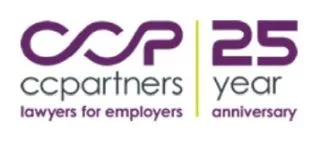- with Senior Company Executives, HR and Finance and Tax Executives
- in Canada
- with readers working within the Healthcare, Retail & Leisure and Transport industries
Moderation in all things – a familiar idiom dating back millennia even, but one that Ontario's Superior Court of Justice has decreed should not apply to (broader) public sector wages, at least not by the force of legislation. Earlier this week, the decision of Justice Koehnen was released in Ontario English Catholic Teachers Assoc. v. His Majesty in which he found the Ontario government's 2019 Protecting a Sustainable Public Sector for Future Generations Act to be unconstitutional.
Bill 124, as it is commonly known, imposed a 3-year moderation period on affected employers wherein they could provide no more than a one percent wage increase in any one year of the moderation period. While the main thrust was aimed at curbing wage increases within the Ontario Public Service, affected employers included those in the Health Care sector (eg hospitals), social assistance organizations and various other broader public sector organizations: if an employer received more than one million dollars in funding from the Province, it was subject to Bill 124. Not surprisingly, unions representing affected employees – of which there were over 700,000 – immediately sought to challenge the legislation on the basis that it violated the Canadian Charter of Rights and Freedoms.
Now, after 3 years and countless negotiated collective agreements that were subjected to the forced moderation period, the Superior Court of Justice has determined that Bill 124 did, in fact, infringe upon Section 2(d) of the Charter – the right to freedom of association1 – finding that Bill 124 constituted a "substantial interference" with this right. Having made that determination, Justice Kohnen then also found that there was no public policy justification under Section 1 of the Charter2 for such an infringement on Charter rights, especially in view of the fact that the government did not explain [satisfactorily] why it was necessary to infringe upon this constitutional right (ie by imposing wage restraints as opposed to allowing free collective bargaining) while at the same time providing tax cuts and licence plate refunds "more than 10 times larger" than the wage-restraint savings.
On that note, the potential impact of this decision is huge: the Financial Accountability Office has stated the overturning of BiIl 124 could cost the government – and, therefore, taxpayers - $8.4 billion dollars over 5 years, including significant retroactive payments to the majority of workers who have already been affected by Bill 124. As a result, it is also not surprising that the government has already indicated it intends to appeal Justice Kohnen's decision – a process we will of course follow closely here.
While the appeal process plays out, there will likely be a call from affected unions to return to the bargaining table for any employers that may have included "wage re-opener" language in concluded collective agreements; that is, language agreed to at the time that provided for a renewed discussion over compensation in the event that Bill 124 was successfully challenged.
If you are an employer who has been subject to Bill 124, the team at CCPartners can help you determine what your next steps need to be, and how to deal with the fallout of not just this decision, but the expected ongoing litigation.
Click here to access CCPartners' "Lawyers for Employers" podcasts on important workplace issues and developments in labour and employment law.
Footnotes
1 The right to bargain collectively was recognized as part of this Charter right since the Supreme Court of Canada's landmark decision in Saskatchewan Federation of Labour v. Saskatchewan
2 Even where legislation infringes upon a constitutional right, it can be "saved" under section 1 of the Charter, where Section 1 states that the rights guaranteed under the Charter are "subject only to such reasonable limits prescribed by law as can be demonstrably justified in a free and democratic society." Case law has evolved based on the Oakes test, a two-step balancing test as follows:
1. The government must establish that the law under review has a goal that is both "pressing and substantial."
2. The court then conducts a proportionality analysis using three sub-tests.
a. The government must first establish that the provision of the law which limits a Charter right is rationally connected to the law's purpose.
b. Secondly, a provision must minimally impair the infringed Charter right. A provision that limits a Charter right will be constitutional only if it impairs the Charter right as little as possible or is "within a range of reasonably supportable alternatives."
c. Finally, the court examines the law's proportionate effects. Even if the government can satisfy the above steps, the effect of the provision on Charter rights may be too high a price to pay for the advantage the provision would provide in advancing the law's purpose.
The content of this article is intended to provide a general guide to the subject matter. Specialist advice should be sought about your specific circumstances.


